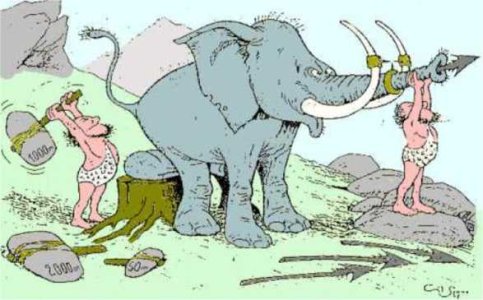First, have you considered changing your name?
As for your question: if you're talking about rockets launched from Earth, remember that the thrust of the rocket is working against Earth's gravity. If the rocket doesn't push up, gravity will pull it back down.
So, all the way up, you've got (rocket providing acceleration up) minus (gravity providing acceleration down). The rocket has to burn fuel constantly to keep the rocket going up. Once you stop burning fuel, the acceleration up will stop. Gravity, however, will keep pulling it down. At this point one of three things will happen.
1. The rocket will keep losing upward velocity until it reverses direction and falls back to Earth.
2. The rocket will have enough speed that it will keep going forward even though Earth's gravity is pulling it down. Essentially, it is constantly falling toward the Earth but never hitting it. This is what we call an orbit.
3. The rocket will have enough speed that it will never fall back to Earth. It has passed the escape velocity of Earth's gravitational field.
Now, to keep thing simple, let's assume you're trying to get an equal mass up there for all three cases. Think of the Apollo missions for a real-world example. The early missions just did docking practice in Earth orbit, so they didn't need to reach escape velocity. They used the smaller Saturn IB rocket (space buffs can feel free to correct me on rocket designations). The moon missions, though, needed to get that same payload (the Command/Service Modules and Lunar Module) to the moon, which meant that they needed extra thrust to reach escape velocity. Extra thrust means you need to burn more fuel. So they needed a bigger rocket, the Saturn V, in order to burn more fuel to get them to that higher speed.
And don't forget that fuel itself is more mass to lift, so you need even more thrust at the beginning. That's why you use multi-stage rockets. No sense in lifting empty fuel tanks and heavy motors once you've burned off so much fuel. The greatest thrust is needed at the very start of the launch, when you're lifting a huge amount of mass from zero velocity against all of Earth's gravity. As the rocket continues to burn fuel, the whole device gets lighter, the speed increases, and less thrust is needed to keep it going upward. So you dump your big first-stage tanks and motors and keep going with a lighter load.
There are many, many fascinating books about rockets and space launches that could explain this in greater detail if you want. Try your local library.
The bottom line is: the higher up you need to go, the longer you need thrust, and thrust requires fuel. So payloads going higher up require bigger fuel tanks to get them there.


 I am sure that the system of the picyure works, maybe today it is not used too much because it is very expensive (needs too many male elephants )
I am sure that the system of the picyure works, maybe today it is not used too much because it is very expensive (needs too many male elephants ) 

